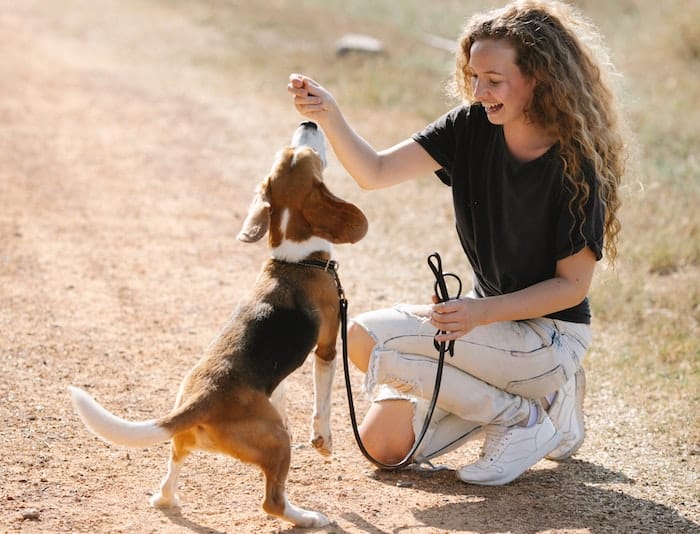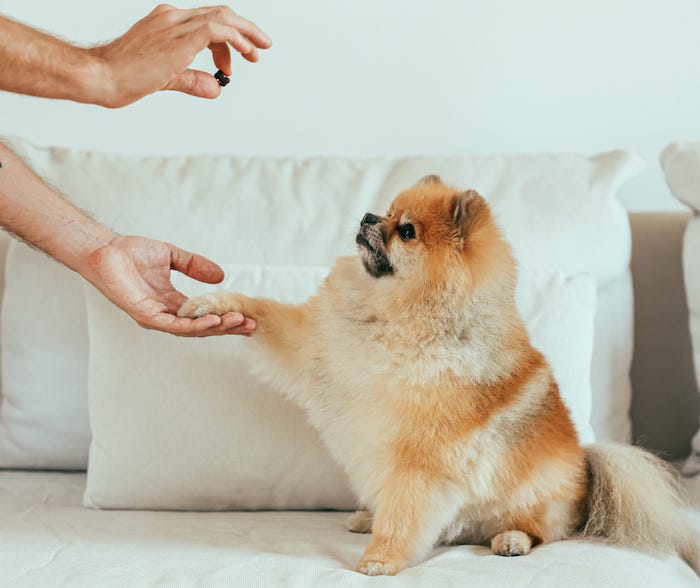Dog training is an essential part of responsible pet ownership. It not only helps to keep dogs well-behaved and mentally stimulated but also promotes healthier relationships between dogs and their owners. Training is more than just teaching tricks; it’s a vital communication tool that effectively bridges the gap between human expectations and canine behavior.
Regardless of the breed, whether it’s an adorable Shihpoo or a burly Bernese Mountain Dog, all dogs benefit from regular training from the day they’re brought home from your local breeder.

Benefits of Dog Training
- Safety: A well-trained dog responds to basic commands like ‘stay’, ‘sit’, ‘come’, and ‘no’. In potentially dangerous situations, these commands could save your dog’s life.
- Builds a Strong Owner-Dog Bond: Training requires consistent interaction, which strengthens the bond between you and your pet. Your dog learns to trust and respect you more, leading to a more harmonious living environment.
- Improves Mental Stimulation and Physical Health: Training challenges your dog’s mind, keeps them engaged, and prevents boredom, which can lead to destructive behavior. Certain training exercises can also promote physical health and reduce weight gain.
- Socialisation: Training can help your dog learn how to interact appropriately with other animals and people, reducing instances of fear or aggression.
Effective Dog Training Methods
- Positive Reinforcement
This is the most popular and arguably the most effective method of training. It involves rewarding your dog when they perform a desired behaviour. The reward, usually a treat, toy, or praise, reinforces the behaviour, making it more likely to be repeated.
- Clicker Training
This is a subset of positive reinforcement training. A clicker (a small device that makes a distinct noise) is used to signal to the dog that they have performed the desired behaviour and a reward is coming.
This method is particularly useful because the clicker’s sound is consistent, unlike human voices, and can be recognized instantly by dogs.
- Relationship-Based Training
This method aims to foster a deep bond and understanding between the dog and the owner. It focuses on mutual respect and communication.
Trainers observe their dog’s body language to identify stress or discomfort and then adjust their training strategies accordingly.
- Negative Reinforcement
While not as widely recommended due to potential adverse effects on a dog’s mental well-being, negative reinforcement still exists as a training method. This approach involves removing something unpleasant when the dog performs a desired behaviour.
However, this is usually reserved for special circumstances by canine behaviorists, such as when a dog is going through exposure therapy, and is generally not advised for amateur dog trainers.

The Impact of Proper Training on a Dog’s Behavior and the Owner-Dog Relationship
Training is a fundamental aspect that moulds a dog’s behaviour, and a well-trained dog usually has a good rapport with their owner. Proper training is often reflected in the dog’s behaviour – a trained dog is not just obedient but is also happier, more balanced, and better integrated into its family.
Impact of Training on a Dog’s Behavior
- Training provides dogs with crucial mental stimulation. Just as humans need jobs or hobbies to stay engaged and fulfilled, dogs require tasks and challenges to prevent boredom and keep their minds sharp.
Dogs are naturally intelligent creatures with a remarkable ability to learn and adapt. By providing them with structured training, you’re nurturing these natural instincts, leading to a more content and well-behaved pet.
- Moreover, training helps mitigate potential behavioural issues. Dogs, particularly young ones, can be prone to destructive behaviours such as chewing, digging, or excessive barking. These behaviours often stem from boredom, anxiety, or confusion about what’s expected from them.
Through consistent training, dogs learn appropriate behaviour and boundaries, reducing the likelihood of these issues arising.
- Training also promotes better communication between you and your pet. With effective training, your dog learns to understand a set of commands and expectations, reducing their confusion and stress.
For example, house-training helps dogs understand where and when they should go to the bathroom, and leash training teaches them how to walk politely without pulling or lunging.

Impact on the Owner-Dog Relationship
The process of training establishes a strong foundation for a rewarding owner-dog relationship. When you train your dog, you’re not just teaching them commands or tricks; you’re communicating with them and building a language both of you understand. This shared language fosters a deeper bond and mutual understanding.
In training sessions, the dog learns to see the owner as a leader and guide. Consistency and predictability from the owner’s side create a sense of security for the dog. This leadership role must be established with respect and patience, avoiding fear-based tactics that can erode trust.
Moreover, training is an excellent opportunity for owners to understand their dogs better. Every interaction during a training session provides insights into the dog’s personality, preferences, and learning style. This knowledge can strengthen the emotional connection between the dog and owner, contributing to a harmonious, rewarding life together..
Overall, training is about building a shared understanding. It’s about teaching dogs to live comfortably in our world, while we, in turn, learn to appreciate and cater to their needs. A well-trained dog is generally a happier, more content animal, and the process of achieving that results in great benefits to the relationship between the dog and the owner.
Final Words
Dog training is not just about obedience; it’s a comprehensive approach to nurturing a happy, healthy pet, and a loving, respectful relationship between owner and dog. Regular, consistent training, ideally starting from a young age and carried throughout the dog’s life, is essential for a well-rounded pet.
Remember that each dog is unique, and the training method should be tailored to fit your dog’s specific needs, personality, and learning style.
Related Reading

I’m delighted you brought up the fact that teaching dogs manners isn’t the main aspect of training them. It is important for your dog’s safety, as you said, whether you are in the dog park or out and about with other people. I will absolutely share this with my daughter to bear in mind, as she has been preparing to get her own dog. I’ll look into experts that can assist her with the training as well. Thanks for sharing!